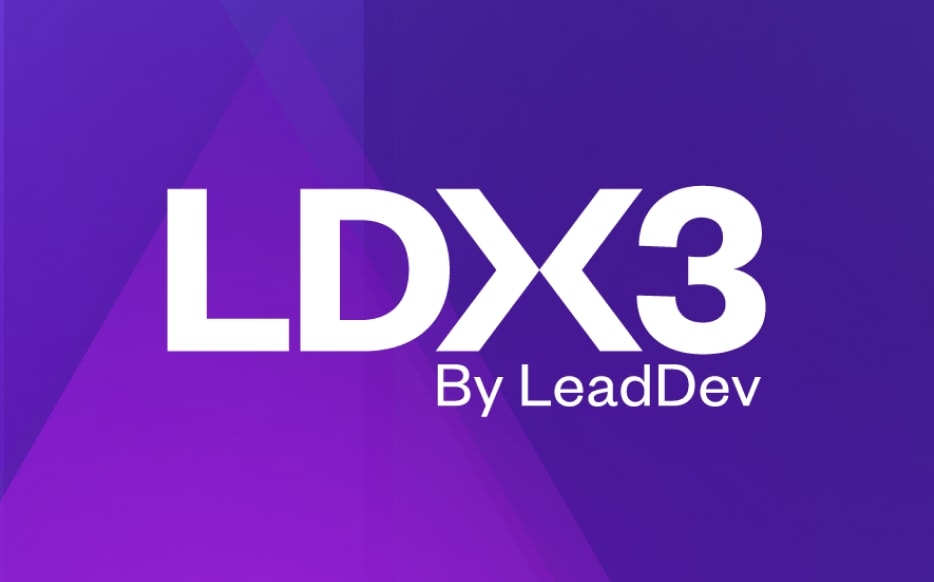You have 1 article left to read this month before you need to register a free LeadDev.com account.
Your inbox, upgraded.
Receive weekly engineering insights to level up your leadership approach.
If you are looking to upskill yourself or your engineering team for the AI era, these are some of the best training courses to explore.
In the past two years, generative AI (GenAI) has gone from a niche research subject to one of the most important emerging technologies in the industry. Regardless of what your organization does, the recent surge in interest in large language models (LLMs), text-to-image models, and other kinds of generative AI have almost certainly impacted you in some way.
Whether you’re being called on to deploy an AI chatbot internally, asked to add AI-powered features to your product roadmap, or are just looking to upskill for the AI era, these are the best courses to check out right now.
Google: Introduction to Generative AI
If you are looking for a broad overview of generative AI, Google Cloud’s Cloud Skills Boost training platform has a handy Introduction to Generative AI learning path. Over five modules, this free nine hour course covers topics like large language models, responsible AI, prompt design, and applying them using Google Cloud Platform tools, specifically its Vertex AI platform. Designed to be accessible to non-engineers, this is also a useful course for getting non-technical colleagues up to speed with the latest technology.
Google: Generative AI for Developers
For a more technical overview, Google’s Generative AI for Developers learning path delves into Google’s Gemini AI and Vertex AI platform, allowing developers, engineers, and data scientists to get started with these tools and get their hands on actual models. Over 11 modules, the free course covers topics like the core concept of self-attention, encoder-decoder architecture, transformer models, retrieval augmented generation (RAG), responsible AI development, and machine learning operations (MLOps).
Other Google Generative AI courses
Google has other AI learning paths for Machine Learning Engineering and Gemini for Google Cloud. Some courses require a $29/month monthly subscription.
Microsoft: Generative AI for Beginners
Through its partnership with OpenAI, Microsoft’s Generative AI for Beginners course might be a natural place to start if you’ve already played around with ChatGTP or the underlying GPT LLMs.
Administered through GitHub, this course will walk you through how to build and deploy a generative AI model using Azure’s OpenAI service or the OpenAI API. It also covers prompt engineering best practices, how to secure generative AI applications, RAG, how to fine-tune an LLM, and lots more over 18 sessions.
Other Microsoft Generative AI courses
Microsoft offers dozens of other generative AI courses through its training platform. There’s a learning path that covers building computer vision solutions with Azure AI vision and another on the fundamentals of natural language processing.
AWS: Generative AI Developer Kit
If you are already familiar with Amazon Web Services (AWS), then its Generative AI Developer Kit is the course for you. It covers the fundamentals of generative AI and prompt engineering, as well as how to build and deploy a basic generative AI question and answer app using Amazon’s SageMaker and Lex tools. It does require a $29/month AWS Skill Builder subscription however.
Other Amazon Generative AI courses
AWS Skill Builder has lots of other courses that cover building with generative AI, such as building language models on AWS.

London • June 2 & 3, 2026
Rands, Nicole Forsgren & Matej Pfajfar confirmed
Hugging Face: Natural Language Processing
As well as being an important repository of AI models and libraries, Hugging Face also offers a number of courses on generative AI. The course on Natural Language Processing offers a detailed introduction to some of the more technical aspects of language models.
Across the 12 chapters, it introduces transformers and how to use them to perform the most common language processing tasks, as well as how they can be employed for other AI tasks like speech processing and computer vision. You’ll need a solid foundation with Python to take this course, but otherwise all the resources are pulled from the libraries hosted on Hugging Face.
Hugging Face also has courses that dive deeper into different areas of AI like deep reinforcement learning and diffusion models.
Fast.ai: Practical Deep Learning for Coders
While many generative AI courses provide a brief overview of the research before diving into building things (especially those from the cloud providers listed above), Fast.AI’s Practical Deep Learning for Coders takes a much more nuts and bolts approach.
Over nine 90-minute lessons, this free course covers building, training, and deploying deep learning models for applications like computer vision and natural language processing – all without any special hardware or software. It mostly uses PyTorch and popular open libraries available from platforms like Hugging Face.
There’s also now a part two, Deep Learning Foundations to Stable Diffusion, that covers implementing Stable Diffusion’s popular text-to-image model from scratch.
LearnPrompting: Introduction to Prompt Engineering
If you are more interested in working with generative AI tools than building them, LearnPrompting’s Introduction to Prompt Engineering is the course for you. Instead of exploring LLMs from first principles, it focuses on how they work – and how you can get them to perform most effectively in the real world by employing techniques like chain-of-thought and few-shot prompting.
While this course is free, LearnPrompting also offers more advanced courses that cover things like retrieval augmented generation and AI agents as part of a $39/month subscription.
Some other GenAI courses
While these are some of the best generative AI courses available, there are lots more out there. Learning platforms like Udacity and Coursera are crammed with courses that cover everything from the basics to the most advanced implementations of different AI methods, with more getting added almost daily.
There’s no time to lose
GenAI is a revolutionary new technology that isn’t going anywhere, and the methods of computing and information processing it enables are going to be incredibly important over the next few years. If you and your team want to stay at the forefront of things, then you will need to develop some understanding of generative AI, how it works, and what it’s good for.





